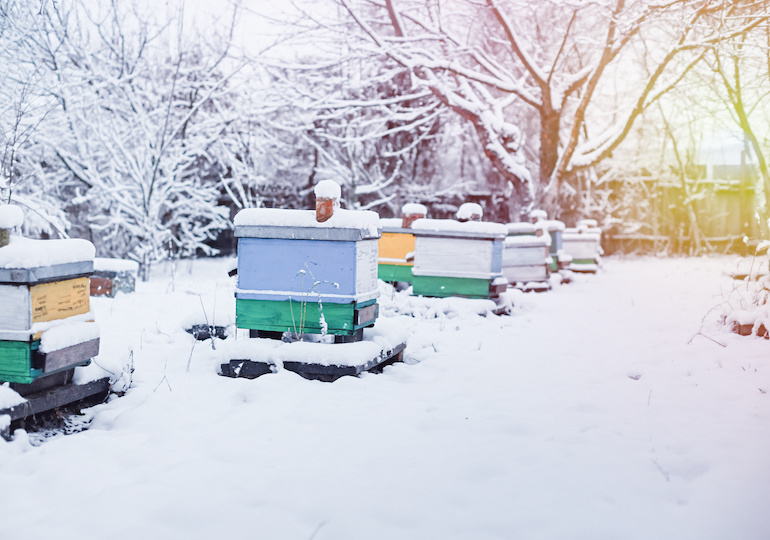 Véto-pharma
Véto-pharma Impact of varroa mite infestation on bee colonies’ thermoregulation: New findings indicate varroa mites reduce bees’ ability to efficiently thermo-regulate their body temperature, making them more vulnerable to cold temperatures.

Honey bee colonies must find strategies to survive various stressors that can affect their health status and stability. Although several factors that have the potential to threaten colony well-being have been investigated in the past, possible interactions or synergies between different factors have rarely been taken into account, as such studies are highly complex. Researchers from the University of Udine in Italy looked more closely at the relation between the abiotic stressor “exposure to cold” and the biotic stressor “varroa infestation” – both of which have been identified as two major causes of winter colony losses, especially in the Northern hemisphere. The authors of the study focused on both the colony level and the level of the individual worker bee.
In order to do that, they used a combination of field and laboratory trials, working with honey bees from two different apiaries in the Northeast of Italy. One of them was treated on a regular basis against varroa infestation to control and reduce the infestation rate as much as possible. The other apiary was left untreated from the summer months until winter with the exception of a single treatment in October to prevent colonies in this apiary from collapsing. Data such as bee population, varroa infestation level, bee mortality, and numbers of bees with deformed wings were recorded between August and December 2018. Temperatures in the brood nest of each colony were taken with temperatures probes between August and November that year. In addition, ambient temperatures at the apiaries were recorded as well.1
In addition, the researchers reared worker bee larvae under different temperatures in the laboratory (34.5 °C vs. 32 °C – 94.1 °F vs 89.6 °F) or artificially exposed them to varroa mites during development in order to investigate the effects of both factors on survival. They also tested the effect of parasite exposure as larvae on the ability of adult bees to thermo-regulate their body temperature by later placing the adult bees in a polystyrene box at 25 °C and using an infrared thermographic camera to evaluate the mean body temperature of the bees. Worker bees with deformed wings were excluded from this experiment, and body temperature was compared, focusing on the thorax region – the warmest part of the body.1
The results of the field trial in this study show that mite infestation in untreated colonies – unsurprisingly – was significantly higher in November compared with treated colonies. This also led to a significantly higher viral load in parasitized bees and a reduced survival. The mean temperature in the brood nest was significantly lower in untreated colonies. In November, the mean temperature difference inside the brood nest between treated and untreated colonies amounted to 4 degrees.1
The laboratory results shed more light on the effects of larval mite infestation and/or rearing temperature on life expectancy and thermoregulation of individual bees. Both larval infection with varroa as well as lower rearing temperatures led to a reduced survival of affected bees with the effect of larval mite infestation being stronger. Mite-infested bees exposed to lower rearing temperature (32 °C – 89.6 °F) showed reduced survival compared to all other groups: control bees and bees exposed to either mite infestation or low temperature.1
As a completely novel result, the authors report that bees infested with varroa as pupae were less able to efficiently thermo-regulate in response to being exposed to sub-optimal temperatures. The weight of the thorax-muscles was not different between the two groups, leading the researchers to believe that infested bees may not have sufficient access to nutrients required for thermoregulation. Confirming this hypothesis, they found that sugar-intake of parasitized bees was significantly reduced compared to uninfected bees, calling this phenomenon a “varroa-induced anorexia”.
A following genetic analysis demonstrated that the expression of the insulin receptor substrate 1 (IRS-1) is up-regulated in infested bees, confirming that varroa infestation directly affects the bees’ metabolism.1
1. Frizzera, Davide, et al. “Varroa Destructor Exacerbates the Negative Effect of Cold Contributing to Honey Bee Mortality.” Available at SSRN 4208675.